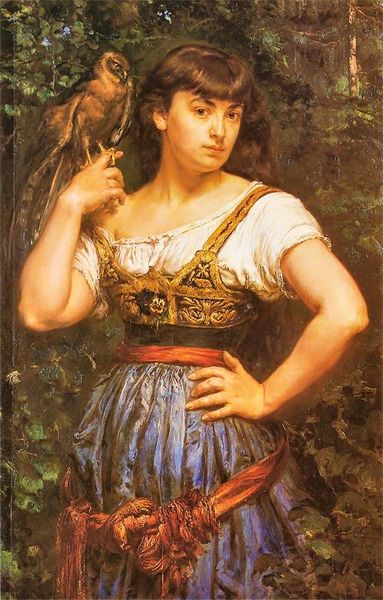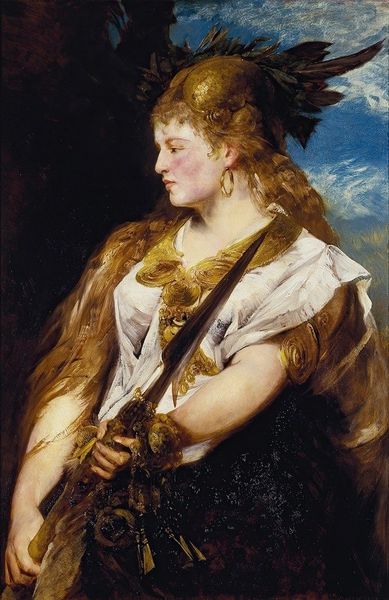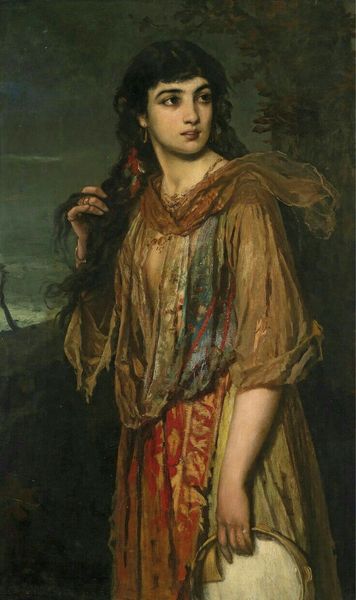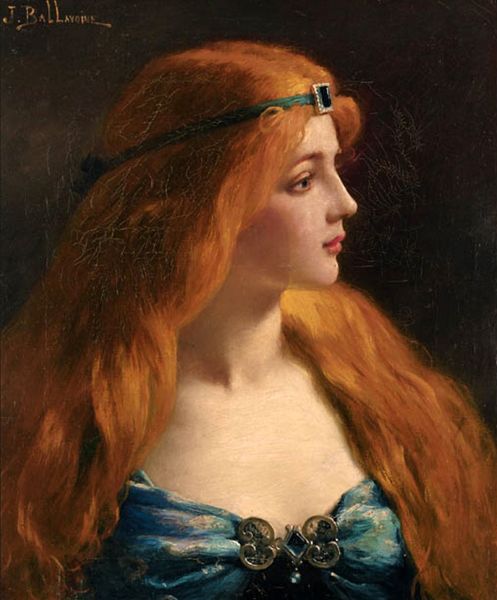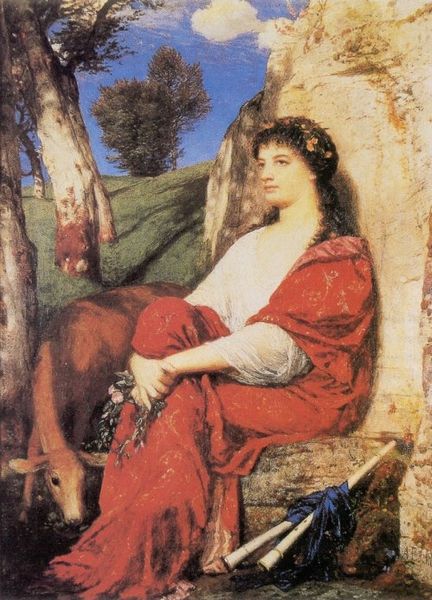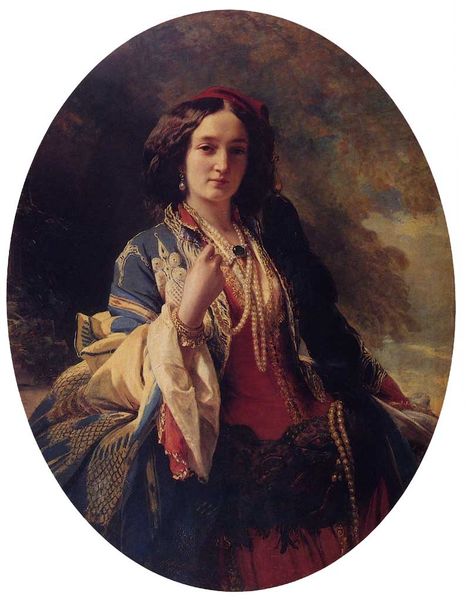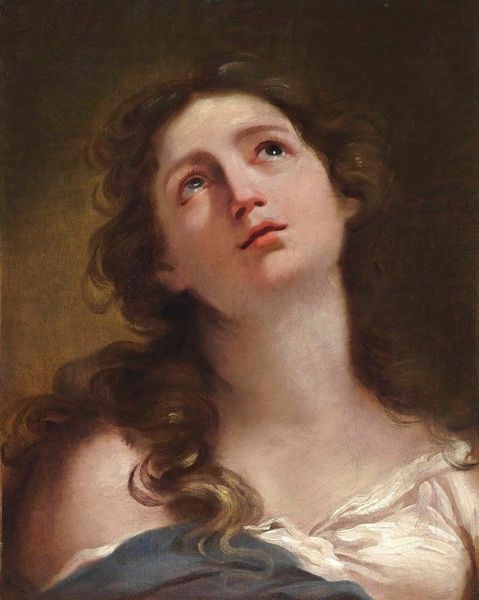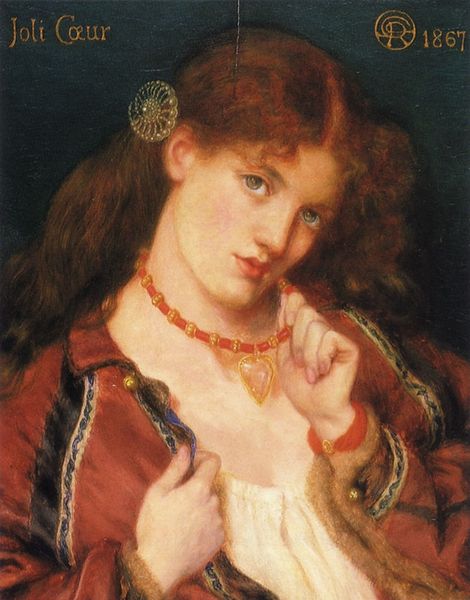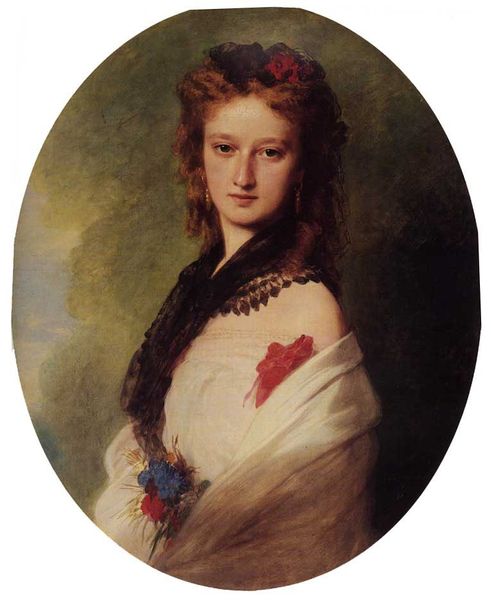
painting, oil-paint
#
portrait
#
painting
#
oil-paint
#
figuration
#
oil painting
#
romanticism
Copyright: Public domain
Curator: Well, hello there. Looking at this oil painting, "Portrait of a daughter Beata" by Jan Matejko, I can't help but immediately feel drawn in. The soft lighting and delicate brushstrokes give the painting a luminous quality. It feels… intimate. Editor: It’s quite arresting, actually. I'm struck by the subject’s gaze—it feels both innocent and knowing. And the way the light catches her face gives her an almost ethereal quality. Do you think there’s an element of romanticism at play here, given the period? Curator: Absolutely. And I'm captivated by the small bird that she seems to be protecting with so much tenderness. Birds often carry complex symbolic meanings, from freedom and the soul to vulnerability. The way Beata cradles it perhaps tells us something about her own nascent womanhood and her protective instincts. I see a correspondence between the child, the girl, and that small creature, maybe an awakening sense of responsibility, innocence taking care of new life. Editor: That's an interesting reading of it. I’d argue the portrait, beyond personal sentiment, taps into broader ideas about women's roles within society at the time, too. Polish society at this point was reckoning with complex realities following national division. How does Matejko’s idealized depiction of his daughter negotiate existing gender dynamics within the socio-political space? We need to consider that the portrait serves a social function, participating in shaping perceptions about women and national identity. Curator: I understand the desire to anchor art in broader social dynamics, but it seems to me that such an image gains significance from that intersection with an individual human relationship and care. Editor: Both elements work together, right? We can read into the painter's portrayal of family and home, and think about broader discussions about national character through such art pieces. But let’s agree this artwork invites many conversations and considerations. Curator: Yes, it surely does, revealing layers of personal tenderness interwoven with profound cultural symbols, reflecting what’s personal and more generally shared. It's beautiful how it invites you in and stays with you long after you've turned away.
Comments
No comments
Be the first to comment and join the conversation on the ultimate creative platform.
